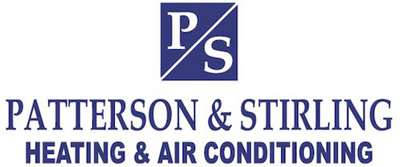
With proper maintenance, your air conditioner can run for 15 years or longer. But even the most well-maintained air conditioner will need to be removed at some point.
When you’re starting to plan for air conditioning installation in Erie, we know that the price tops your list of questions. The bright side is that getting a new air conditioner might be more economical than you realize, because of rebates, our special offers and financing for qualified customers. You’ll also receive better energy efficiency, which will typically pay off over the years through less expensive electrical bills.
Here’s what to anticipate when you’re replacing your air conditioner.
The Best Time to Consider Replacing Your Air Conditioner
Knowing when to repair or replace your air conditioner can be hard. Here’s what our pros advise.
Replace
- Your air conditioner is older than 10 years old. While some may work longer, most air conditioners run for around 15 years with annual maintenance. We suggest prepping for air conditioning replacement close to the 10-year age. Even if you replace it when it’s only a decade old, the U.S. Department of Energy says this change could save you 20-40% on cooling costs.
- You’ve avoided regular maintenance for a long time. Much like a car, your cooling system has to have regular air conditioning maintenance. Skipping this crucial service can lead to lower efficiency, more recurring repairs and even a decreased life span.
- Your air conditioner needs frequent or expensive repairs. Needing air conditioning repair is usually the outcome of skipping tune-ups But as your air conditioner gets older it’s more likely to experience a major malfunction. When repairs are more than half the cost of a new air conditioner, it’s time to get a new one.
- Your home feels unpleasant. If your home feels too humid or you’re having hot and cold spots in certain areas, your air conditioner might be having difficulty keeping up. This is a sign it’s time to replace it.
- Your energy bills are costly. Your air conditioner gets less efficient as it ages. As a consequence, it could need to work more often or longer to keep your residence at your desired setting. Newer air conditioners have the most up-to-date energy-efficient technology to keep your residence comfortable and cooling costs reasonable.
- Your air conditioner runs on R-22 refrigerant. If your air conditioner was installed before 2010, there’s a high likelihood it runs on Freon. Also known as R-22, this refrigerant is no longer being made because of its bad effects on the environment. You can keep using your air conditioner, but if it were to experience a refrigerant leak, solving that would be extraordinarily expensive. This is since R-22 is only available in limited, recycled portions.
Repair
- Your air conditioner is less than 10 years old. If your air conditioner is newer, it’s best to repair it.
- Repairs aren’t common or inexpensive. The best way to avoid unanticipated repairs is to have annual maintenance completed. But when repairs are only needed not very often or are economical, repair your air conditioner.
- Your air conditioner has a valid warranty. Most air conditioners include a 5- to 10-year limited warranty that usually covers the compressor. Your exact warranty length is up to your manufacturer, but it offers valuable protection in the event of a huge failure. If your air conditioner is protected by warranty, we suggest fixing it.
Average Air Conditioner Cost
The majority of homeowners spend around $4,631 on a new air conditioner, per national averages compiled by HomeGuide. Air conditioner cost averages often range from $3,350 to $5,912, but your total cost {might|could|may] vary.
There are several details that affect your total cost, like:
- The air conditioner model you select, since more energy-efficient ones are more expensive.
- The size your space needs.
- If you need to replace your ductwork, which can happen if your ductwork is old or separated.
We provide free estimates at Patterson & Stirling so you can be confident you’re getting a fantastic deal. And with our wide range of air conditioners, there’s an energy-efficient model that accommodates just about any budget.
Air Conditioner Size
Air conditioner size is critical. A system that’s too small won’t be able to keep your home cool. And one that’s too large may turn on and off too often, or short cycle. This act can drive up your cooling expenses and wear your air conditioner out more quickly. This could also create temperature instabilities and make your residence feel less comfortable.
At Patterson & Stirling, our technicians have many years of experience in correctly sizing and installing the right air conditioner for your residence. The size you need depends on how large your house is, along with several other factors. Some of the most typical sizes include:
- 2 ton, which cools up to 1,000 square feet
- 3 ton, which cools up to 1,600 square feet
- 4 ton, which cools up to 1,900 square feet
- 5 ton, which cools more than 2,000 square feet
Other factors that can affect air conditioner size are:
- The weather in Erie.
- Ductwork quality and age.
- How many windows you have and the style, since big or picture windows might be less efficient.
- If your home receives more sun or shade.
- Insulation quality and concentration.
- How many people are in your family.
Seasonal Energy Efficiency Ratings
Your air conditioner’s efficiency is impacted by its SEER, or Seasonal Energy Efficiency Rating. This ranking measures how well it transforms electricity to create cooling. The greater the number, the more efficient the air conditioner is.
When you’re installing a new air conditioner, it’s important to know:
- Old air conditioners are ranked around 8-9 SEER.
- New air conditioners start at 13 SEER. Ones installed in the southwest and southeast must be a minimum of 14 SEER due to U.S. Department of Energy mandates. As of 2017, these SEER rating requirements have saved homeowners trillions of dollars.
- ENERGY STAR®-certified air conditioners begin at 14.5 SEER.
- Higher SEER-rated air conditioners have additional features to help you save more. These features may involve variable-speed cooling. Instead of running at full speed continuously, these air conditioners can fine-tune blower speeds based on your cooling needs. This results in quieter and more energy-efficient cooling. While an air conditioner with a better SEER rating is usually higher priced, it may be eligible for additional rebates. And the energy savings over its life span might help it pay for itself.
Start Your Air Conditioning Installation with Patterson & Stirling Right Away
When you’re preparing for air conditioning replacement, the company who puts it in is just as important as the model you go with. Patterson & Stirling is one of the top names for air conditioning installation in Erie. From helping you choose the ideal solution for your house to reviewing financing options to professional installation, working with us is a breeze. Call us at 814-308-0416 to begin today!


